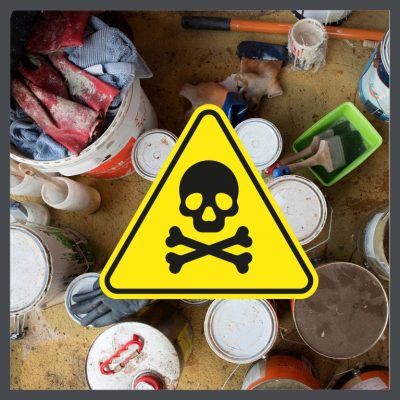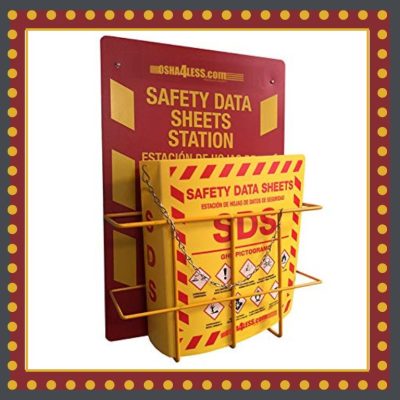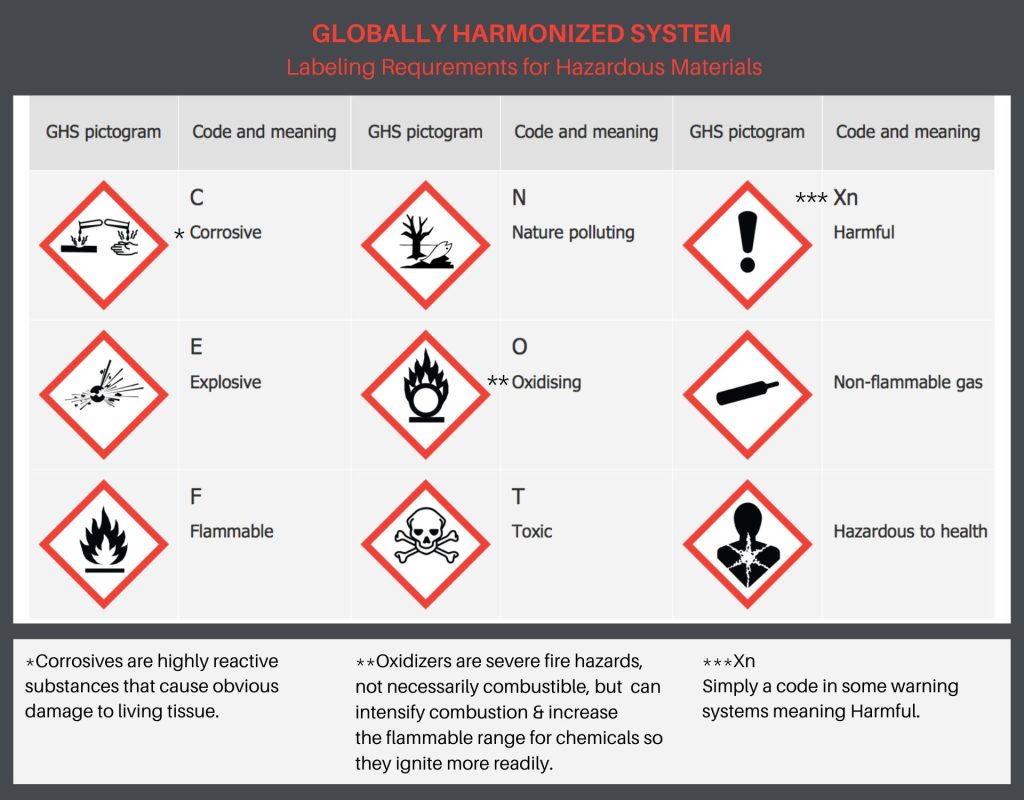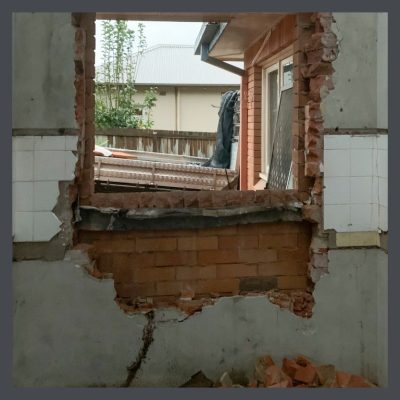 The dangers of restoring an old house can be considerable, but with proper planning can be minimized. Let’s take a look at the actions required.
The dangers of restoring an old house can be considerable, but with proper planning can be minimized. Let’s take a look at the actions required.
A contractor has been hired to begin the restoration of your home. You have discussed your staying in the house while the work is being performed & you have figured out how to do it despite the inconveniences. But what about the dangers to which you might be exposed?
The fact of it is that you will be living in a jobsite, in the middle of sawdust, paint, solvents & other fumes. Some of these materials may not give you any warning signs of their danger- such as a bad odor or immediate irritation, so it’s a vital to understand the hazards to yourself, your family & to your pets (whom we know are family but I just want to mention them because they live close to the floor & they lick themselves.)
Fortunately, by law, all the dangerous materials that will be used in the restoration of your old house, have detailed, written safety information about them. These materials should be named in the bids you receive from contractors, & your contractor should be happy to provide you with copies of the safety information, but if he balks, (uh, not a good sign) you can get them directly from the manufacturer online.
SAFETY DATA SHEETS & THE DANGERS OF RESTORING AN OLD HOUSE
 OSHA (Occupational Safety & Health Administration) is a U.S. federal body whose mission is to “assure safe & healthy working conditions for working men & women by setting & enforcing standards & by providing training, outreach, education, & assistance.”
OSHA (Occupational Safety & Health Administration) is a U.S. federal body whose mission is to “assure safe & healthy working conditions for working men & women by setting & enforcing standards & by providing training, outreach, education, & assistance.”
Their Hazard Communication Standard requires that each manufacturer, distributor, or importer provide Safety Data Sheets (SDS’s) for each hazardous material to users & workers to explain information on these hazards, clearly & thoroughly. The Standard requires that the information be presented in a consistent, user-friendly format.
Previous regulations did not mandate this standard & manufacturers did not use safety materials that were consistent one to the next. For example, some manufacturers labeled the most dangerous materials as a 1, others did the complete opposite, labeling the most dangerous as a 5. And, the data was not organized in a consistent fashion so you had to search the contents for the information that you needed each time. Some of these sheets contain multiple pages so you can see that these inconsistencies would not be helpful in an emergency situation!
 SDS’s tell users, both workers & homeowners, the properties of each chemical, what the hazards of the product are to the individual & to the environment. They let you know how to use the product safely, what will happen if the recommendations are not followed, & how to recognize symptoms of exposure. Very importantly, they lay out the steps of what to do if emergencies should occur.
SDS’s tell users, both workers & homeowners, the properties of each chemical, what the hazards of the product are to the individual & to the environment. They let you know how to use the product safely, what will happen if the recommendations are not followed, & how to recognize symptoms of exposure. Very importantly, they lay out the steps of what to do if emergencies should occur.
Your contractor is required by law to keep these in the workplace & to train his workers on them so that they will know how to handle these hazardous materials to keep themselves & others safe. Fortunately, there are safety companies that create safety meetings that can be done in the field every week. Each one is a sheet of paper with the information on it that each person reads & signs off. Easy peasy.
This is the minimum safety training that a professional company performs in order to reduce the amount of dangers inherent in restoring old houses, for their employees & for you.
I do not recommend the hiring of any contractor or tradesperson who has a casual attitude, or who is ignorant of the importance of Safety Data Sheets.
THE SDS SECTIONS- FROM THE TOP
Lists the specific materials & names its intended use. It also provides you with the contact information for the supplier.
- Provides warning of the hazards of the material.
- Lists the all ingredients of the product.
- Describes the first aid treatment that would be given by an untrained person in case of exposure.
- Provides instructions for fighting a fire caused by the chemical.
- Gives instructions on dealing with accidental spills, leaks or releases in order to minimize harm to persons or property.
- All data about safe handling & storage.
- Lays out exposure limits with solutions for minimizing such exposure.
- Identifies physical & chemical properties associated with the product.
- Describes the various actions of the chemical constituents under various conditions.
- Explains the toxic & health damaging properties of the material.
- Describes the product’s environmental impact.
- Proper disposal & safe handling of materials & containers.
- Proper shipping.
- States the safety, health & environmental regulations that apply to the products.
- Dates of when the sheet was created or edited.
These sheets may be short & sweet but they also may be many pages long. Studying them is not an entertaining or amusing task, but it’s one to not overlook when you wish to mitigate or avoid the dangers in restoring your old house.
GLOBALLY HARMONIZED SYSTEM
The Globally Harmonized System (GHS) is an international system of hazard communication which provides a standard system to format safety data sheets & to label hazardous elements in pictograms.
PICTOGRAMS: a pictorial symbol for a word or phrase.

Hazard pictograms are used to warn us about the presence of a hazardous (to people &/or the environment) chemical. These pictograms appear in the shape of a diamond with a bright red border & a white background. Any single chemical could have one or more than one of these warning images.
If you should like to read more about SDS’s, OSHA has a document that provides more information. In reading the sheets you are going to run into many words you do not understand. OSHA provides a glossary of terms that you might find helpful.
SORRY, THERE’S MORE
 The SDS’s are about only the new materials that are being used. There’s also the issue of the old materials coming out. Amongst these is our old buddy, lead. I’m not a fan as I have expressed loudly in this article.
The SDS’s are about only the new materials that are being used. There’s also the issue of the old materials coming out. Amongst these is our old buddy, lead. I’m not a fan as I have expressed loudly in this article.
There’s an abundance of other materials & pathogens to pay attention to during demo. This is a good article to prepare you for what you are very likely to encounter. I’d also like to send you to my YouTube playlist, SAFETY FIRST, which is an introduction to personal protective equipment.
The first one by the little animated woman with the cute English accent makes a good point. The equipment that is need is not task oriented. It must keep you safe in the environment.
Disclaimer: There is a great deal more information on construction safety than what you see in this article & in these videos. This is merely an introduction to the topic. I am not a safety professional. I’m just a woman who has suffered the ill effects of being around toxic materials & I don’t want you to experience the same.
THE REWARDS OF RESTORING AN OLD HOUSE (DESPITE THE DANGERS!)
The rewards are huge. You will be saving a piece of history that is beautiful & tells a story & you will contribute to that story. You will learn & teach your children problem solving skills, design skills, communication & cooperation skills, prevailing over horrible surprises skills, budgeting skills & give them the opportunity to apply the things that they are learning in school. Studying the SDS’s (using the OSHA glossary!) & watching the videos is a great way to orient them to their physical environment & stretch those science chops. It’s also a good opportunity to teach them that there are dangers in the environment that can be overcome with knowledge & planning. A great lesson to learn early!
STAY IN THE BUNGALOW KNOW!!!
Sign up for our newsletter & receive our FREE E-book, 7 VITAL Things to Do Before You Hire a Contractor.




0 Comments